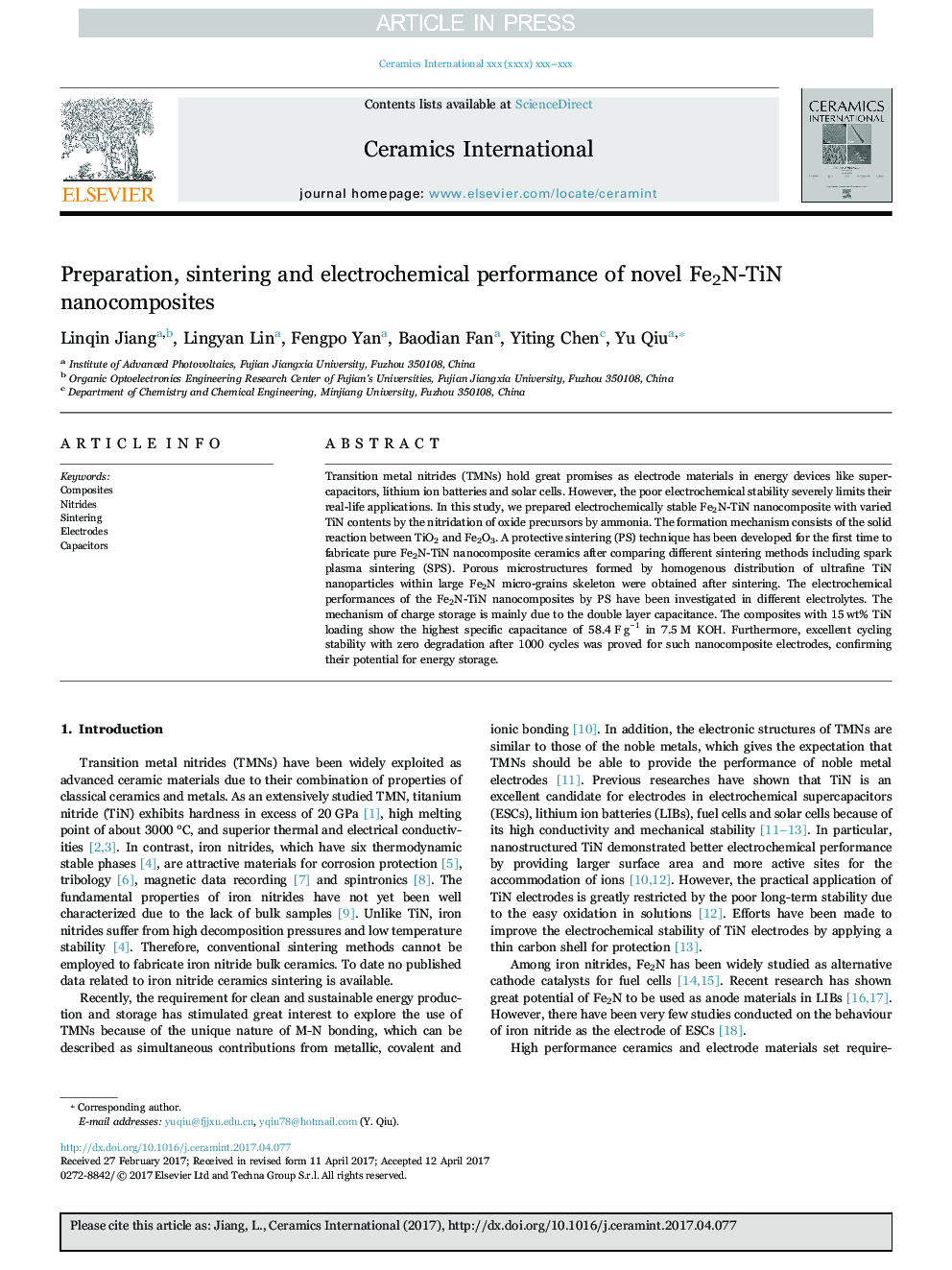| Article ID | Journal | Published Year | Pages | File Type |
|---|---|---|---|---|
| 5438403 | Ceramics International | 2017 | 9 Pages |
Abstract
Transition metal nitrides (TMNs) hold great promises as electrode materials in energy devices like supercapacitors, lithium ion batteries and solar cells. However, the poor electrochemical stability severely limits their real-life applications. In this study, we prepared electrochemically stable Fe2N-TiN nanocomposite with varied TiN contents by the nitridation of oxide precursors by ammonia. The formation mechanism consists of the solid reaction between TiO2 and Fe2O3. A protective sintering (PS) technique has been developed for the first time to fabricate pure Fe2N-TiN nanocomposite ceramics after comparing different sintering methods including spark plasma sintering (SPS). Porous microstructures formed by homogenous distribution of ultrafine TiN nanoparticles within large Fe2N micro-grains skeleton were obtained after sintering. The electrochemical performances of the Fe2N-TiN nanocomposites by PS have been investigated in different electrolytes. The mechanism of charge storage is mainly due to the double layer capacitance. The composites with 15Â wt% TiN loading show the highest specific capacitance of 58.4Â FÂ gâ1 in 7.5Â M KOH. Furthermore, excellent cycling stability with zero degradation after 1000 cycles was proved for such nanocomposite electrodes, confirming their potential for energy storage.
Related Topics
Physical Sciences and Engineering
Materials Science
Ceramics and Composites
Authors
Linqin Jiang, Lingyan Lin, Fengpo Yan, Baodian Fan, Yiting Chen, Yu Qiu,
